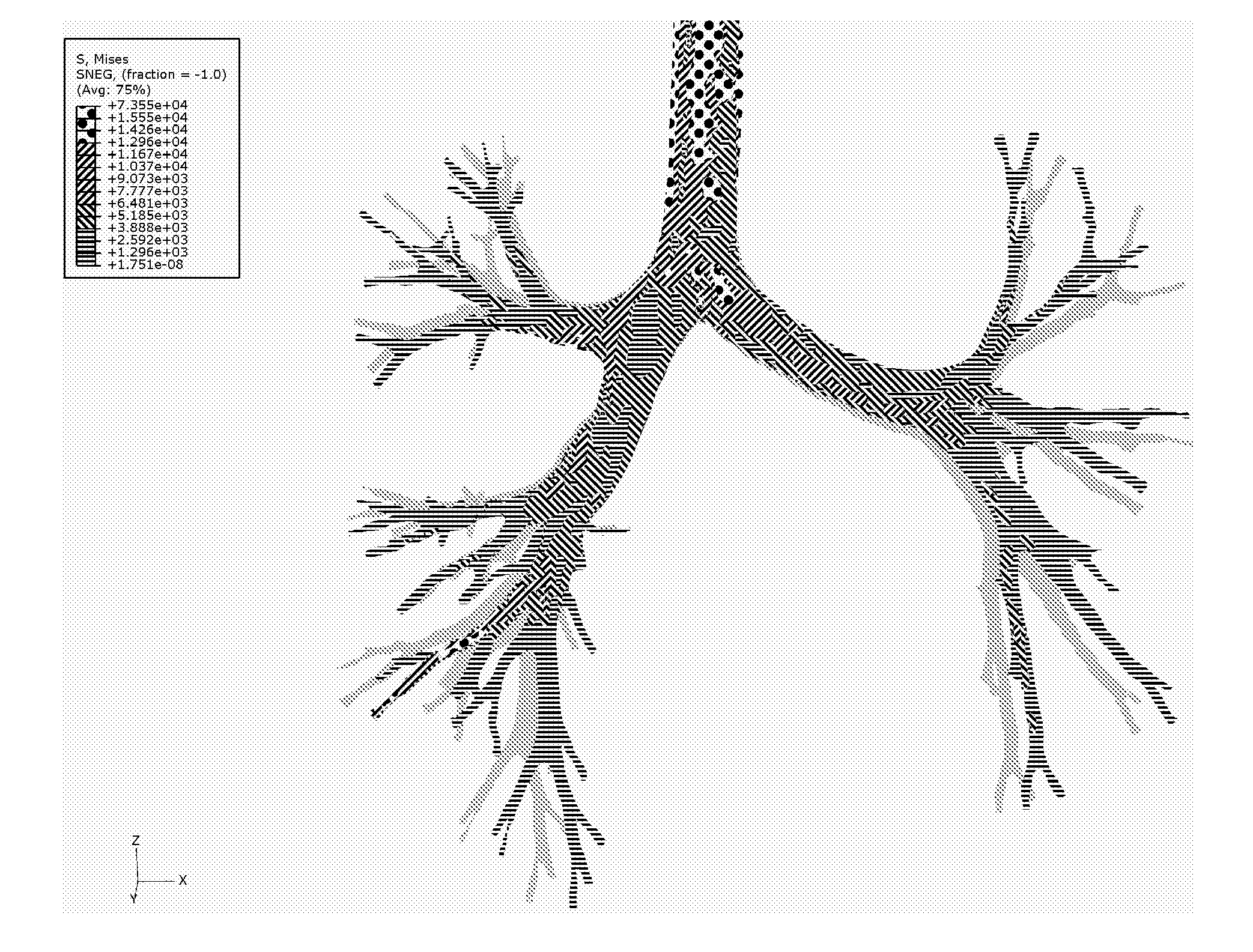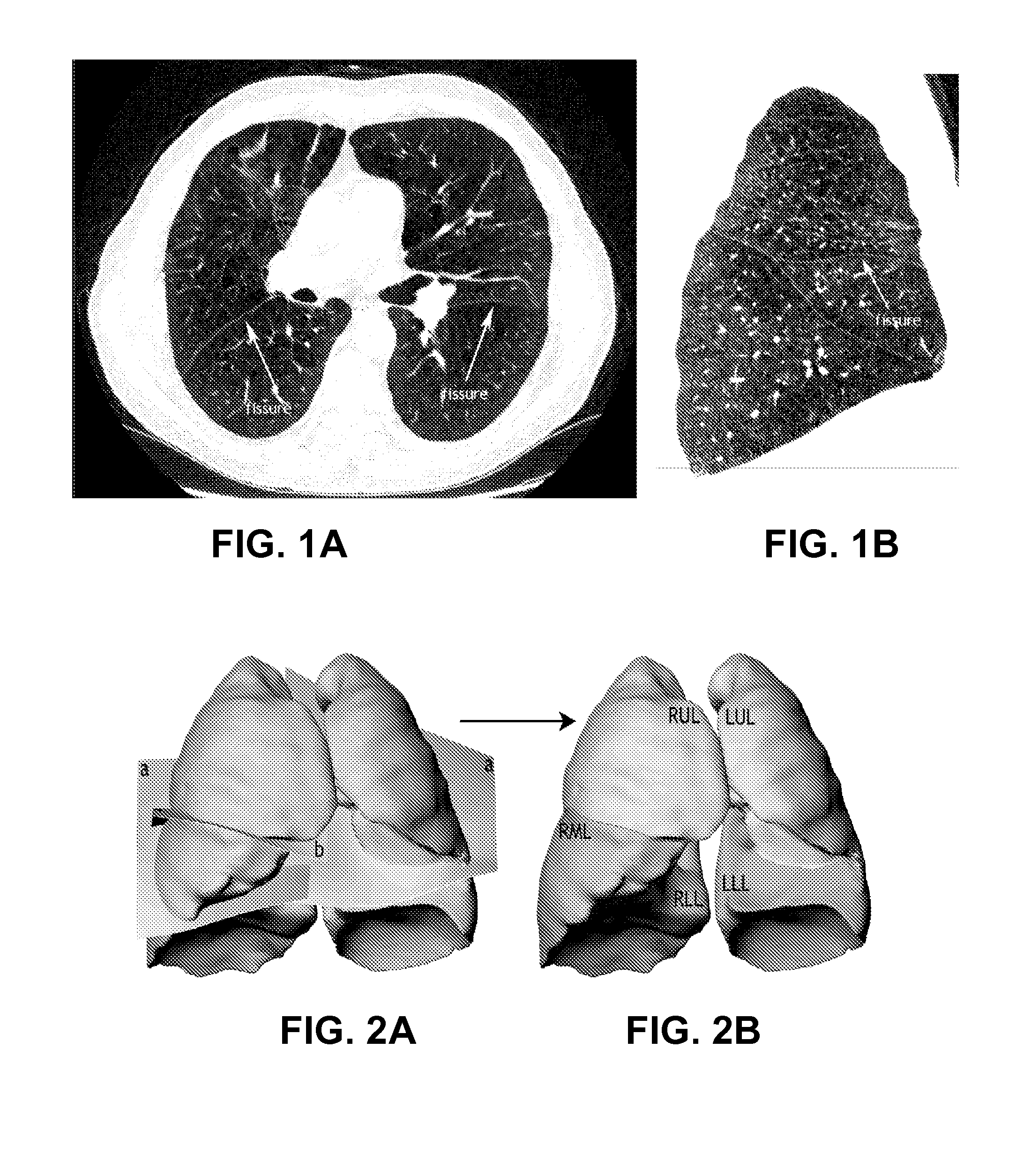Method for determining treatments using patient-specific lung models and computer methods
a technology of computer methods and lung models, applied in the field of mechanical ventilators, and determining the efficacy of treatment for respiratorytype conditions, can solve the problems of many potentials of mv
- Summary
- Abstract
- Description
- Claims
- Application Information
AI Technical Summary
Benefits of technology
Problems solved by technology
Method used
Image
Examples
examples
Clinical Study: Non-Invasive Ventilation in COPD Patients
[0068]In order to demonstrate the effect of MV in chronic obstructive pulmonary disease (COPD) patients, a clinical study was designed. In this study 20 patients were included after an exacerbation of the symptoms. In a control group, 10 patients were treated using inhalation medication only. In an experimental group, 10 other patients received, in addition to the inhalation medication, nocturnal sessions of Bi-level Positive Airway Pressure (BiPAP)—an NIV treatment. Patients were evaluated after 6 months to assess the effect of both methods, and again after 12 months when all MV activities were stopped. This study functions as the basic validation to develop the method to determine optimal ventilation parameters.
Preliminary Results: Non Invasive Ventilation in COPD Patients
[0069]FIGS. 5-9 show the initial results for patient 1 (control), and patients 2 to 5 (NIV-treated). These data indicate that for both the actively treated...
PUM
 Login to View More
Login to View More Abstract
Description
Claims
Application Information
 Login to View More
Login to View More - R&D
- Intellectual Property
- Life Sciences
- Materials
- Tech Scout
- Unparalleled Data Quality
- Higher Quality Content
- 60% Fewer Hallucinations
Browse by: Latest US Patents, China's latest patents, Technical Efficacy Thesaurus, Application Domain, Technology Topic, Popular Technical Reports.
© 2025 PatSnap. All rights reserved.Legal|Privacy policy|Modern Slavery Act Transparency Statement|Sitemap|About US| Contact US: help@patsnap.com



